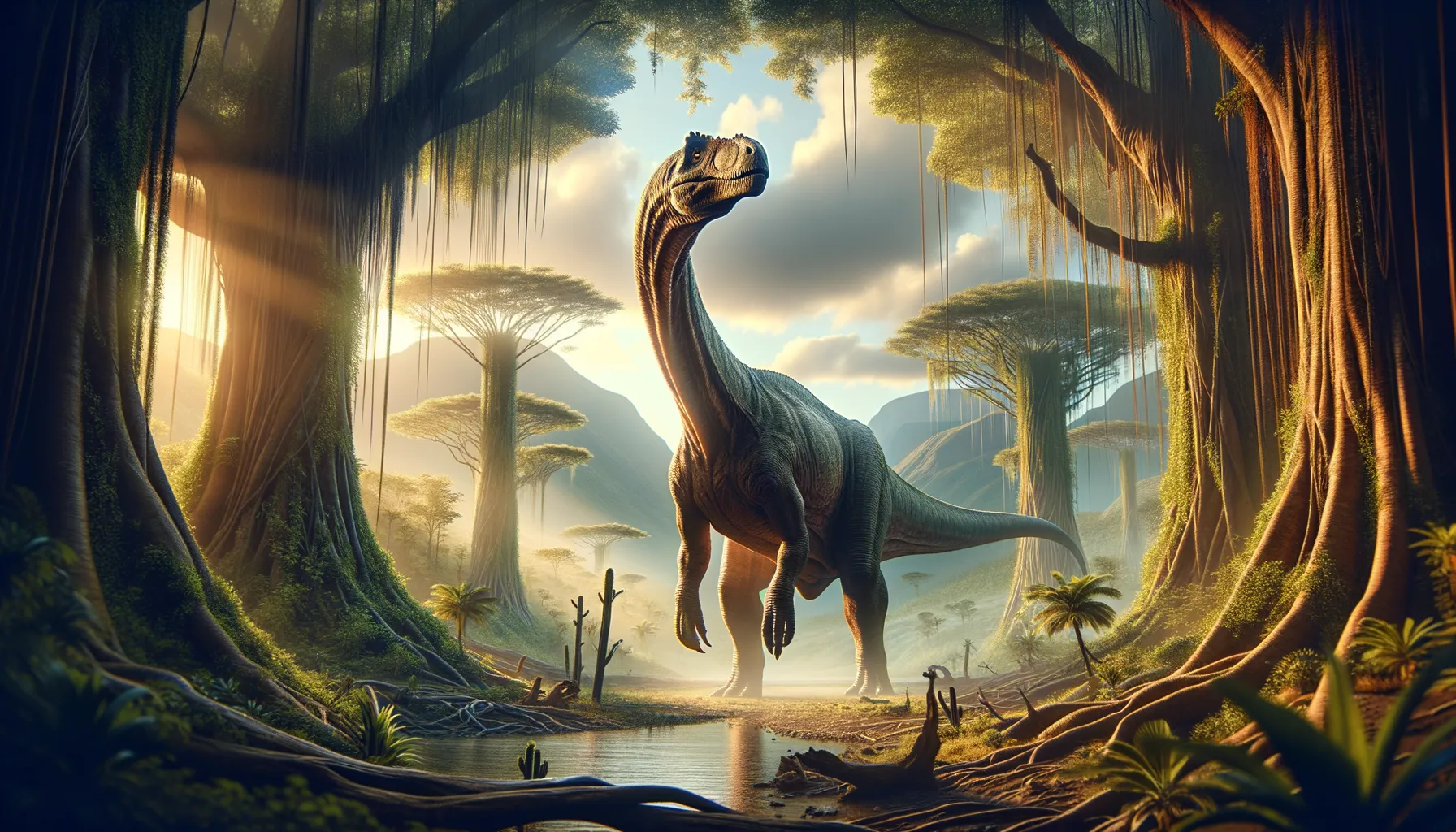
Brohisaurus
Giant of the Cretaceous landscapes.
Period
Cretaceous
Length
Measured up to 20 meters long.
Height
Stood about 9 meters tall.
Weight
Weighed around 15 to 20 tons.
Brohisaurus was a large herbivorous dinosaur from the Late Cretaceous Period. Known for its massive size, it roamed what is now the region of modern-day Pakistan. As a sauropod, it had a long neck and tail, which helped it reach high vegetation and maintain balance. Its discovery has provided valuable insights into the diversity of dinosaurs in the Cretaceous of Asia.
Diet
Brohisaurus was herbivorous, primarily feeding on plants. Its long neck allowed it to reach foliage high in the trees, consuming a variety of leaves and ferns. This helped support its massive size and provided the necessary nutrients for growth.
Hunting
As a herbivore, Brohisaurus did not hunt. Instead, it foraged for plant matter, relying on its long neck to reach diverse sources of food. By consuming large quantities of vegetation, it sustained its enormous body.
Environmental challenges
Brohisaurus faced challenges such as fluctuations in climate that could affect available vegetation. The competition with other herbivores for food resources may have also posed difficulties. Predation from theropods, although uncommon due to its large size, was another potential threat. These challenges required adaptations, such as efficient feeding strategies and possible migratory movements in search of food.
Speed
Relatively slow due to its large size.
Lifespan
Estimated to live several decades.
First discovery
First discovered in the early 21st century in Pakistan.
Fun Facts
- Brohisaurus was a herbivorous dinosaur that lived during the early Jurassic period.
- Its fossils were first discovered in Balochistan, Pakistan.
- Brohisaurus is believed to have been a relatively small sauropod compared to its more famous giant relatives.
- Its name, Brohisaurus, is derived from 'Brohi', the tribe of people from the region where it was found, and 'saurus' meaning lizard.
- Although only limited fossil evidence exists, scientists think Brohisaurus possessed a long neck and tail, characteristic of sauropods.
- Brohisaurus helps paleontologists understand the diversity and distribution of early sauropods across ancient landmasses.
- It provides insight into the environment and ecosystems of the Jurassic period in what is now South Asia.
Growth and Development
Brohisaurus experienced significant growth from its juvenile to adult stages, largely supported by its consistent diet of plant matter. It likely underwent rapid development during its early years to reach a size that minimized predation threats. As it matured, its growth rate would have slowed down while it achieved full size.
Habitat
Brohisaurus inhabited the floodplains and forests of what is now the Indian subcontinent. These regions provided ample plant resources necessary for its sustained herbivorous diet. Seasonal changes would have influenced its movement patterns, seeking lush areas with a constant supply of food.
Interaction with other species
Brohisaurus interacted with various species within its ecosystem, including other herbivorous dinosaurs with which it shared its habitat. Competition for resources was likely, though its size may have given it an advantage in reaching food. It also coexisted with carnivorous dinosaurs, relying on its size and herding behavior for protection.
Natural lifespan
The natural lifespan of Brohisaurus was likely several decades.
Reproduction
Brohisaurus likely reproduced by laying eggs, common among sauropods. It may have chosen nesting sites in secluded or protected areas to reduce predation on its eggs. The parenting behavior of dinosaur species is still debated, but some level of protection for the eggs or hatchlings could have occurred.
Social behaviour
Brohisaurus may have lived in herds, which would provide protection from predators. Herding would also allow collective movement to areas with abundant food resources. Social interactions within the herd could have included communication to ensure group cohesion.
Fossil locations
The fossils of Brohisaurus have been found primarily in Pakistan. This discovery highlights the diversity of the dinosaur faunas in the Late Cretaceous of Asia. Such fossil sites are crucial in understanding the distribution and diversity of sauropod dinosaurs in ancient ecosystems.
